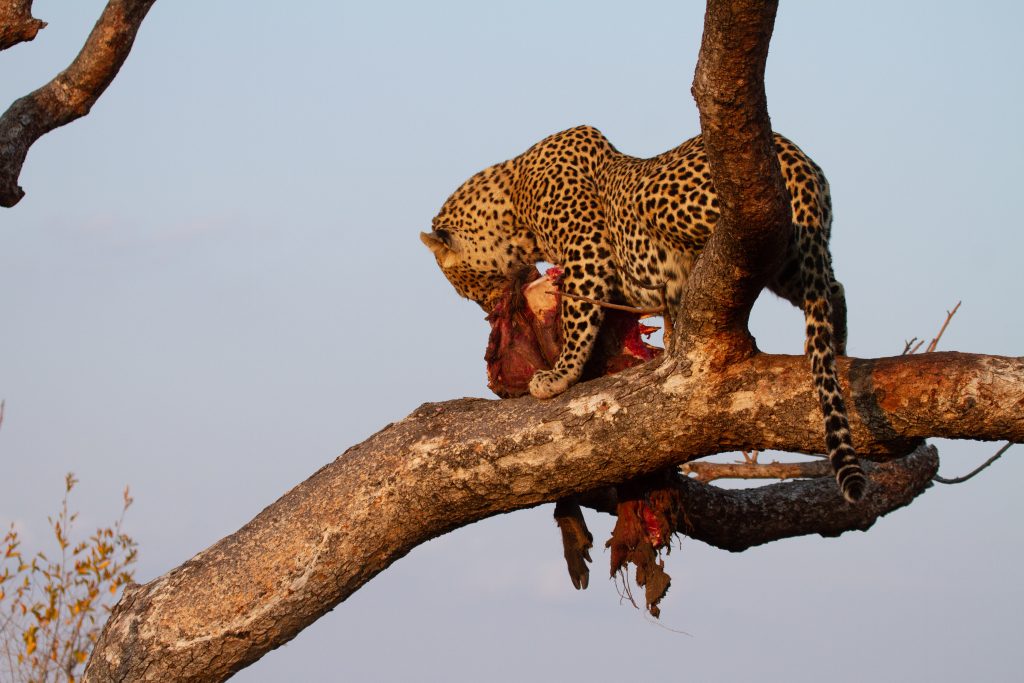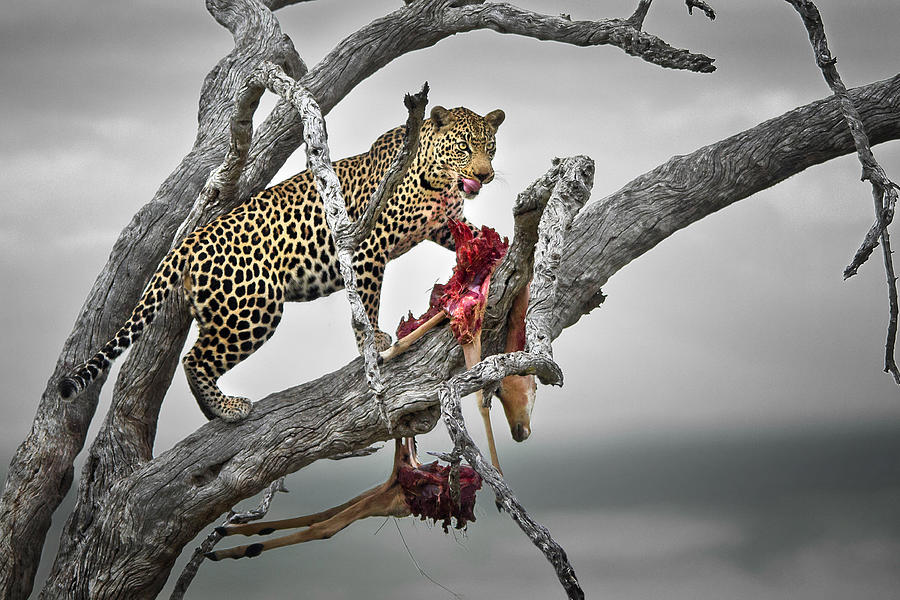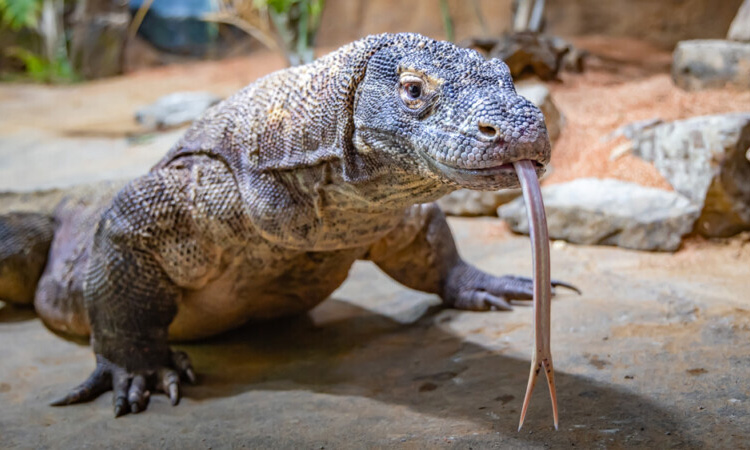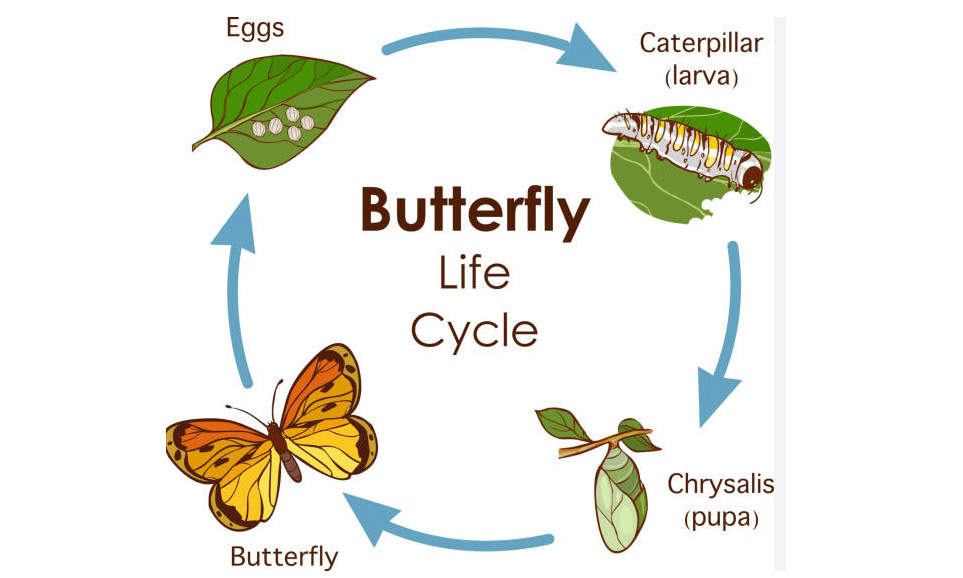Leopards, the epitome of stealth and grace in the animal kingdom, are renowned for their ability to blend seamlessly into their surroundings. One of their remarkable behaviors involves leopard hiding prey in trees, an intricate dance between predator and prey that unfolds with unparalleled precision.
Nature’s Canvas: The Leopard’s Camouflage Mastery
In the dense jungles and savannas that leopards call home, their spotted coat serves as a natural camouflage, allowing them to seamlessly merge with the dappled sunlight filtering through the leaves. This mastery of disguise grants them the advantage of surprise, a crucial element in the art of hunting.
The Hunt: A Ballet of Precision and Patience
When a leopard successfully secures its prey, the real artistry begins. Rather than consuming the kill immediately, leopards often opt for an unconventional approach – they hoist it into the branches of a tree. This behavior not only keeps the meal away from scavengers but also showcases the leopard’s exceptional strength and agility.
Aerial Dining: The Strategic Advantage of Treetop Feasting
Hoisting prey into the treetops is a strategic move. It allows leopards to dine undisturbed, far from the reach of other predators such as lions or hyenas. The elevated position also offers a vantage point for the leopard to survey its territory, ensuring that no potential threats are approaching.
Masterful Maneuvers: The Leopard’s Climbing Prowess
Leopards possess an extraordinary climbing ability, a skill honed through evolution to navigate the challenging terrain of their habitats. Their lithe bodies, powerful limbs, and retractable claws enable them to ascend trees with remarkable ease. The leopard’s proficiency in climbing is not only a survival tactic but a means of securing its meal in a hidden, elevated pantry.
The Art of Concealment: Adapting to Changing Landscapes
Leopards are adaptable creatures, and their behavior of hiding prey in trees is not limited to a specific habitat. Whether in the lush canopies of tropical rainforests or the gnarled branches of acacia trees in the savanna, leopards seamlessly integrate this strategy into their hunting repertoire.

Nature’s Balance: A Crucial Role in Ecosystem Dynamics
Beyond the spectacle of a leopard concealing its prey lies a deeper ecological significance. By hoisting kills into the treetops, leopards play a role in regulating prey populations. This behavior helps maintain a delicate balance in the ecosystem, preventing overgrazing and ensuring the health of vegetation.
Conservation Challenges: Preserving the Stealthy Stewards of the Wild
Despite their incredible adaptations, leopards face numerous challenges in the modern world, including habitat loss, poaching, and human-wildlife conflict. Conservation efforts are crucial to ensuring the survival of these elusive predators and the ecosystems they inhabit.
In conclusion, the leopard’s ability to hide prey in treetops is a mesmerizing display of nature’s intricacies. It showcases the adaptability and intelligence of these magnificent creatures, emphasizing their vital role in maintaining the equilibrium of the wild. As we marvel at this stealthy dance, let it serve as a reminder of the delicate web of life and the importance of conserving these elusive stewards of the natural world.




